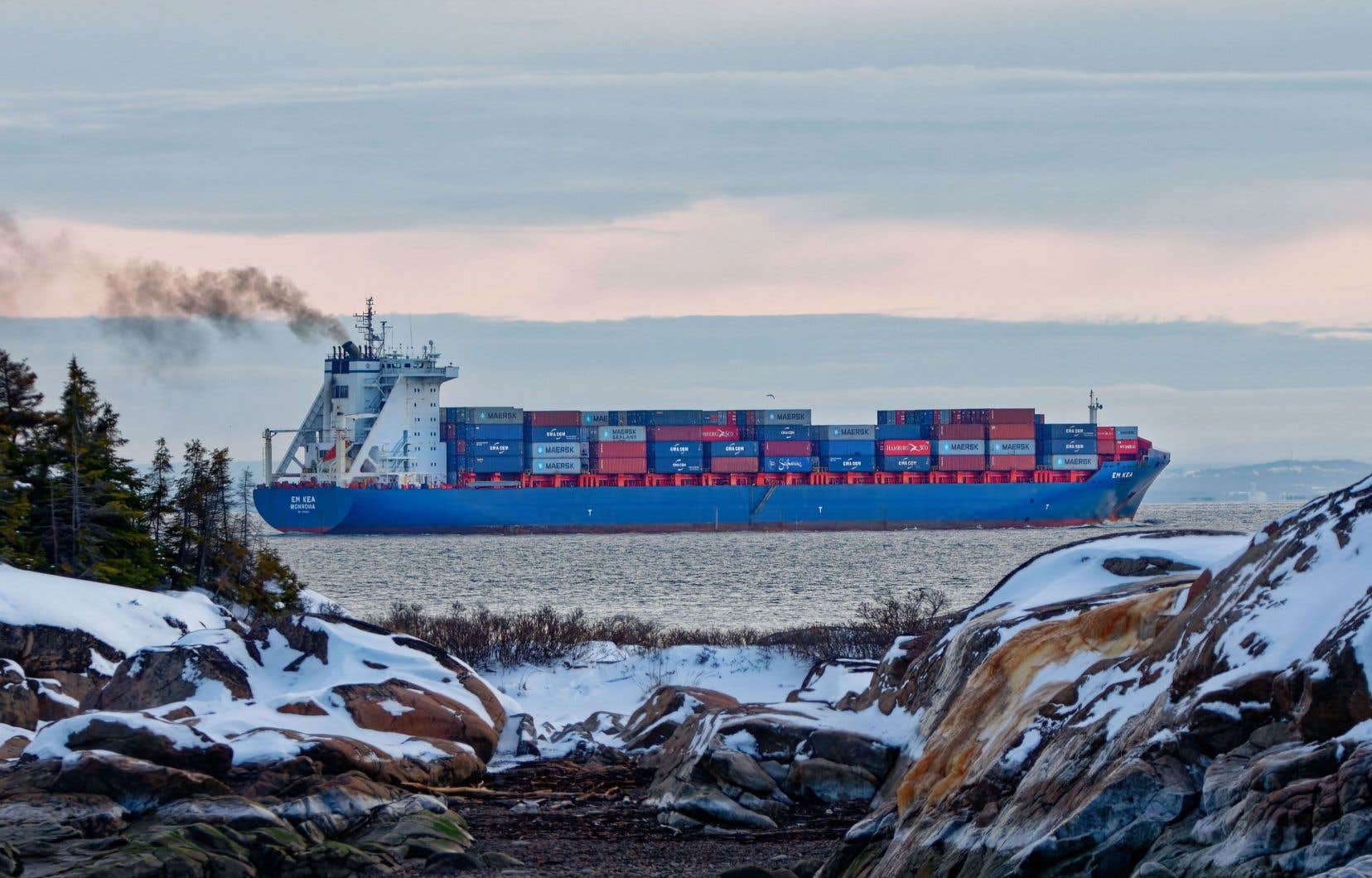The shipping world woke up on Tuesday to the shock of a rare tragedy. The container ship collision Dalí left at least six dead. According to experts, such a catastrophe could not occur on the St. Lawrence River, despite the thousands of boats that circulate there each year and the dozen bridges they must cross. Overview in three questions.
Has Quebec ever experienced naval disasters like this?
A “momentary loss of propulsion” induced by an electrical failure caused the Baltimore disaster, according to initial findings from the governor of the State of Maryland. Quebec is not exempt from naval accidents of this type, although most of the time the results are not as destructive.
“A broken electrical wire” was the cause of an accident in Matane in 2019. The ferry Apollo had then hit the Matanais quay after being unable to activate its thrusters to control its approach. No pollution or injuries were subsequently reported, but the incident sounded the death knell for the ship. Above all, passengers had been deprived for several weeks of a maritime link between the two banks of the St. Lawrence.
These mechanical failures occur “from time to time,” confirms Serge Buy, president and CEO of the Canadian Ferry Association. Such problems have recently struck boats in British Columbia and Newfoundland, despite “regular” maintenance. A boat even caught fire in 2022 off the coast of Prince Edward Island. “It’s something normal. It’s only more spectacular when a boat hits a quay than when a bus has an accident. »
Accidents like the one in Baltimore could not be repeated here. No boat the size of Dalí does not circulate in Quebec anyway. The largest ships that sail in our waters do not reach half the volume of the unfortunate container ship.
However, freight ships are not accident-free. Annually, out of 3,000 vessel passages in the St. Lawrence Seaway, between 8 and 12 impact reports are recorded, according to Jean Aubry-Morin, of the St. Lawrence Seaway Management Corporation. This is generally “contact without impact, without damage” other than a dent on the hull of a boat that docks too quickly or a scratch when the ship passes too close to the walls of a lock, for example.
How do the authorities react in the event of an accident?
The container ship involved in the Baltimore tragedy sent out a distress call just before the fateful collision. This “Mayday” at the last minute allowed controllers to quickly block automobile traffic on the Francis Scott Key bridge, thereby limiting the loss of human life.
The pilots had less than five minutes to react, estimates Pascal Desrochers, president of the Central Saint Lawrence Pilots Corporation. “It could have been much worse if we hadn’t reacted quickly. »
Such an emergency system exists here too. In the event of a major problem, Canadian pilots of ships on the St. Lawrence quickly establish a link with the Quebec Ministry of Transport to close a bridge.
What’s more, throughout the St. Lawrence, teams constantly supervise the comings and goings of boats. Intervention groups are ready at all times to react in the event of a problem. “It’s the same thing as an airport,” says Jean Aubry-Morin. We have around twenty people in Saint-Lambert who control the entire process in real time. »
Are ships operating in Canadian waters in sufficient condition to prevent such failures?
With boats 38 years old on average, the Canadian navy certainly has an “old fleet,” according to Pierre Drapeau, general director of the Chantier Davie Canada Suppliers Association. Despite this, the expertise of Quebec and Canadian shipyards makes it possible to keep all of the country’s ships afloat. “All ships, every year, undergo a maintenance program,” he assures. Like a car that you pay for twice when it needs to be repaired, each ship can cost between 5 and 10 times its original price in restoration costs over its useful life.
Foreign boats are all subject to inspection before entering the St. Lawrence, notes Jean Aubry-Morin. Local officers inspect the wheelhouse, control instruments, engine room and even the crew to ensure compliance of all these elements and, ultimately, prevent any incidents in Canadian waters.
